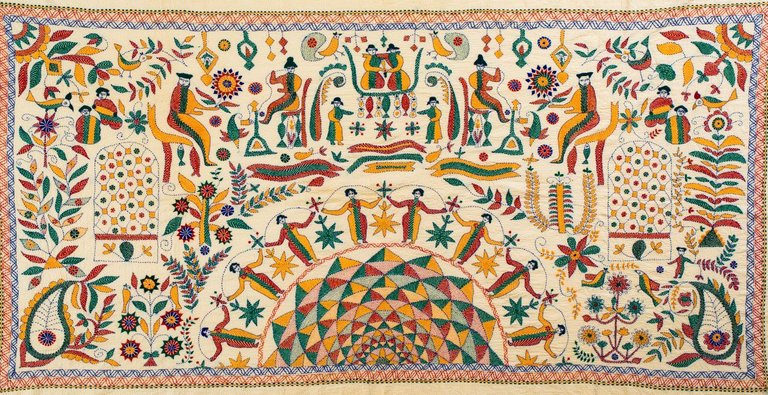
Outside tip tip rain, accompanied by cold wind - The thing that will be most remembered before going to sleep in Bengal is Kantha. It may be without external design or design. Kantha occupies a major place in Bengal's folk culture and rural cottage industry.
.jpg)
The custom of creating a new kantha for her when she has a baby at home has been around for a long time. Traditional customs of wedding guests or social occasions like homecoming are found in some villages of Bengal. Nakshi Kantha is on the gift list when she sends her daughter-in-law after marriage.
The monsoon lasts for a long time in Bengal. Out of the house work is reduced for women, they find a bit of retirement in the field. It is a common practice for Bengali women to get this leisure time and sewing katha in the hands of a needle is a traditional practice. With the rapid change in rural society, such societies are also changing.
But still in the story, the rural women worked from noon till dusk. Extraordinary ability to grow on the ground of the kantha, pictures of trees, birds or trees. Sometimes the story of sadness and happiness has come up, the story of the puppet ever heard in the light of the lantern.
Although Bangla eats on the thorns, the style and design of the kantha sewing are also found in the two Bangla, because the art was born long before the partition of Bengal. Therefore, Nakshi Kantha has become immortal in Bangla proverbs, stories, songs or poems. There is a garden like 'dreaming of a million bucks lying on the shore,' as the legend of Pallikabi Jasim Uddin's 'Nakshi Kantha field' is. It is through this narrative that Bangla literature has emerged as a story of how love and pain can emerge in each and every piece of clothing. This poem is the immortal narrative of the love of lover Rupai and lover Sajur.
The immortal legend is called 'Nakshi Kanthar Field'
After the marriage, the story did not go far in love with Rupai and Sajur. Ferrari becomes silver. Waiting for her husband Saju, the rest of her life, began to weave nakshi katha, goes day by month. Saju Nakshi grabs the needle in the neck, how many stories to write, silver does not come back. This is how the whole life was cut. On the day that Szur's knitting knit was finished, she begged her mother, after her death, to have the nakshi kantha laid over her grave. Many days later, the body of a foreign-born clan was found beside the tomb of Sajur lying under Nakshi Kantha.
"Somebody saw it on the deep night after the field
Who is flying in the great vacuum holding Naxi kantha
He plays the bamboo flute with his hands in his hands
Ai-Gaon Ogaon deepens in pain."
('Nakshi Kantha field'; Jasim Uddin)
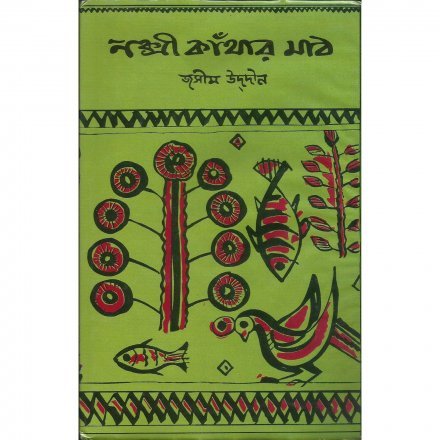
In this way, women of Bengal have also made nakshi katha in spite of husband or lover, living in the land of memory of relatives or family relatives in exile or abroad. Some may have been able to give a new story to their relatives, some have not been able to afford silver.
Outside the blanket
The prevalence of kantha is prevalent throughout the two Bengal states. In Mymensingh, Faridpur, Jessore, Khulna and Bangladesh villages are spread over Gangetic culture. In India, West Bengal, Assam and Bihar are also found in diverse kantha assemblages. Bihar's 'Sujani' Kantha has 'geographical recognition' in the international arena. Although the same name and almost the same kantha are also prevalent in the Rajshahi area of Bangladesh.
Some tearing, old-fashioned sarees, lungi, dhoti or sheets are commonly used to make kantha, but the saree has a different shape to make the kantha. First wash the old cloth, in which case the starch (liquid remaining during cooking) is given in some cases. Three to seven sarees are also used on one side of the field in terms of thickness.
Apart from the Nakshi kantha, common sewing katha is seen in the village Ganj. There is no design bravery, the need is there. After sewing, the old cloth is sewn together to form a kantha. Stitch is provided around the edge so that it does not tear easily. The stitching shoulders are quite thick and thick to prevent winter. In the northern part of Bangladesh, the canals made in Rajshahi and Tapai Nawabganj areas are quite thick. In addition to our winter coats or blankets, we also have a different complimentary blanket for winter prevention.
Nakshi Kantha Design
However, wherever the design can be seen, many draw flowers, birds and extras as per their wish. Many imitate family or grandmother's designs. The variety of stories, folklore, character of rural potholes or religious characters and the discipline are varied. Along with the shrine, the motifs of the Nakshi zanamas or the Qur'an containing the Qur'an can be seen in the moon, the line of religious texts, the mosque or the minaret.
However, there are many designs that have been embedded in the desert in Bengal for thousands of years. Its philosophical origins are found in Indian Hindu, Buddhist or Islamic religion. However, it is not at all the case that designers draw designs based on the importance of philosophical theory or symbols. In many cases, the design is spread as a family, but the mold is kept in a small handkerchief-shaped cloth to preserve the design. As a result, the next generation can revive the design by looking at it, sometimes adding new material from the next generation and enriching it.
_LACMA_AC1994.131.1.jpg)
One such famous design is a pedestal or wheel spreading around a circle. This design, which is centered around the circle, is very important not only in the kantha or the handkerchief but also in the architecture of the whole of India. Nakshi can be seen anywhere in a circle centered around a circle. Besides, the design of the paddle and the wheels are also eye catching.

Extravagant
The design of trees and shrubs occupies a significant place in Indian handicrafts and cottage industries. The design of the tree came in a variety of ways on the kantha, handkerchiefs and cool legs. In some places, pictures of horses, peacocks or other animals have appeared again. In some cases it is seen that the designers associated the design with his or her loved one's name or initials.
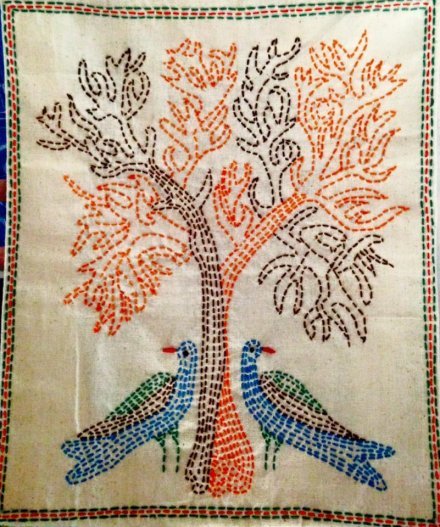
Because of this variation in the design of the canvas it is difficult to get caught or find the philosophical source of that design. The long-lasting industry has added a new dimension. The design of the nakshi kantha does not stop at just the kantha, the design of the tree-leaf or flower-bird is similar to that seen in tablecloths, handkerchiefs, hats, pillows or bed linen.
How long does it take
Nakshi kantha is usually not made in one day, it is slowly developed over time. As mentioned earlier, this was once the retirement of women in Bengal. There is also the gift of worship, purban or other gifts. It takes seven to fifteen days to build a medium-sized kantha. It can take more than a month to design a large canvas and complex.
Economic and cultural values
The old cloth was so close to the poor that it could be folded and folded in the same way as the weaving of old clothes. However, in modern society, its economic value has been redefined to the elite.
For a long time, in the eyes of the rich, the kantha was the object of the poor and middle class winter. For the sake of necessity in the upper society of Bengal, there was a practice of making Nakshi kantha in the form.
However, over time, a cultural appeal has been made for the skillful work done on the Nakshi Kantha land, which has increased its value. It is from this application that Nakshi Kantha has emerged as a potential cottage industry. Nakshi Kantha's professional craftsmen were not available to anyone at one time, as the industry was very fond of hobbies and needs. As a result, with the socio-economic changes, there was a loss. The precious design of the nakshi kantha that went on for ages was also at risk. However, in the present Bangladesh and various parts of India, various government and non-governmental organizations are trying to take the knitting knitwear to the cottage industry.
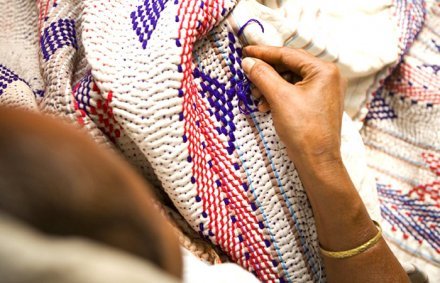
Nakshi Kantha design is not just a nail-biter's nail-biting design, it is a story of love, sometimes of sadness, hidden in the nakashi kantha. On the way to Bengal, one of the Nakshi Kantha stands with the story lost in the desert.
Post and image source roar.media/bangla/main/art-culture/nakshi-kantha-an-important-part-of-bengal-culture/
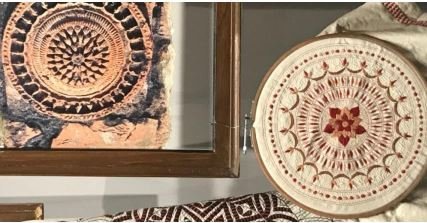
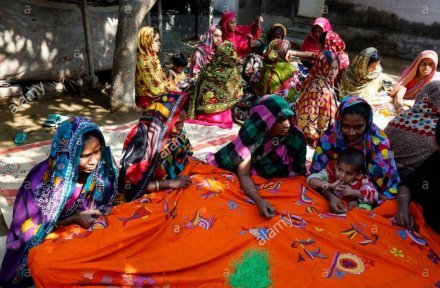
Congratulations @hasifa! You have completed the following achievement on the Steem blockchain and have been rewarded with new badge(s) :
You can view your badges on your Steem Board and compare to others on the Steem Ranking
If you no longer want to receive notifications, reply to this comment with the word
STOPVote for @Steemitboard as a witness to get one more award and increased upvotes!